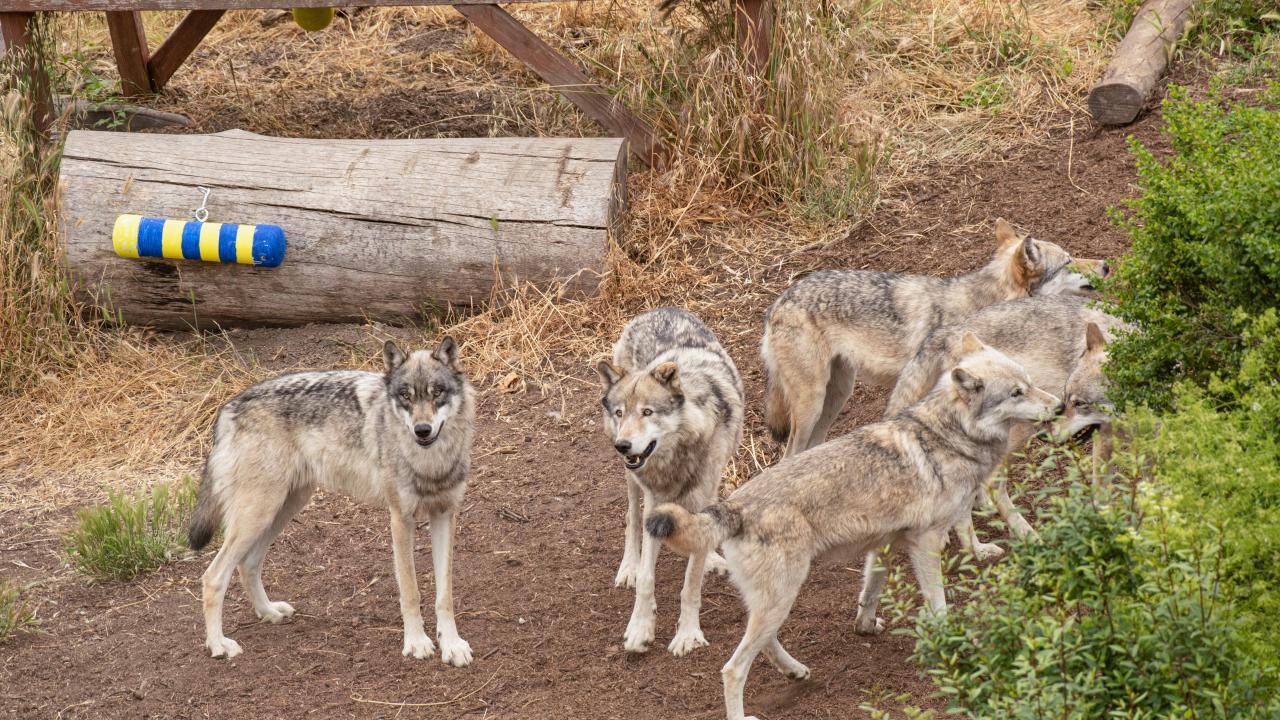Researchers using puzzle boxes, rain sticks and papier-mâché balls are studying captive gray wolves at the Oakland Zoo and the California Wolf Center to evaluate personality and problem-solving skills of the endangered animals.
The novel research out of University of California, Davis, which also incorporates hundreds of hours of video and observational surveys, is seeking to shed new light on the lives of gray wolves, how they interact as part of a pack and respond to strange, new things
The hope is to enhance the quality of life for wolves in captivity and learn more about the species. The findings could also help ranchers deter wolves from livestock in the wild.
For many people, the wolves they know are villains from fairy tales or pests that were hunted during the early days of the country, but gray wolves are notoriously neophobic, or afraid of new things, and they have been a protected endangered species for more than 45 years.
The work out of the Department of Animal Science at UC Davis could create a more well-rounded picture about gray wolves.
“If we learn what the wolves are fearful of, no matter their personality type, we can use this knowledge to prevent human-wildlife conflict,” Kristina Horback, an associate professor and director of the Animal Behavior and Cognition Lab, said about the research.
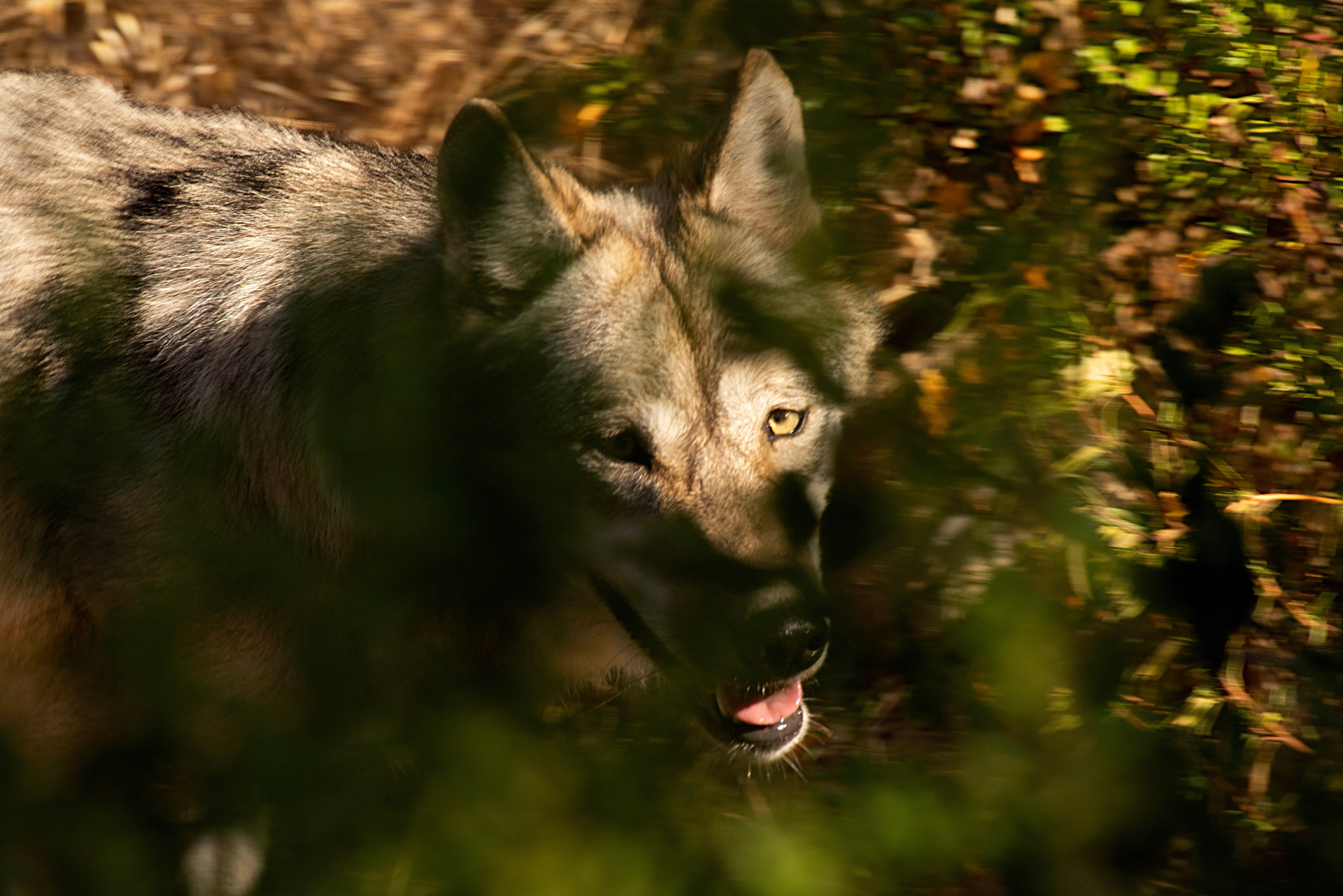
Novel research
Many captive wolves in the United States have been socialized or raised from birth by humans. The UC Davis research is centered on captive wolves not raised by humans, something that has never been done, Horback said
Understanding more about the wolves can help in a variety of ways, from understanding mate compatibility and social structures in captivity to increasing awareness about the species and identifying wolves who could be reintroduced into the wild.
“We want to know more about these wolves," Horback said.
Research at the Oakland Zoo’s California Trail began in June for five weeks and moved to the California Wolf Center in San Diego County in early August.
“The research is really bringing to light who they actually are as a species,” said Yasmeen Ghavamian, a Ph.D. student in Horback’s lab who is leading the research. “They’re not this big bad wolf. They’re quite afraid of new things and afraid of approaching humans and engaging in risk-taking behaviors in this type of setting.”
Oakland Zoo has a pack of six gray wolves: mom Siskiyou, dad Sequoia, sons Arroyo and Lassen, and daughters Sonora and Anza (named by the facilities after the California counties where wolves have been seen). This area is a popular location, with a boardwalk passing over their habitat that is often crowded with kids, teens and adults.
Signs warn visitors not to howl as that could frighten the wolves, and when animal care staff enter their territory, they distance themselves.
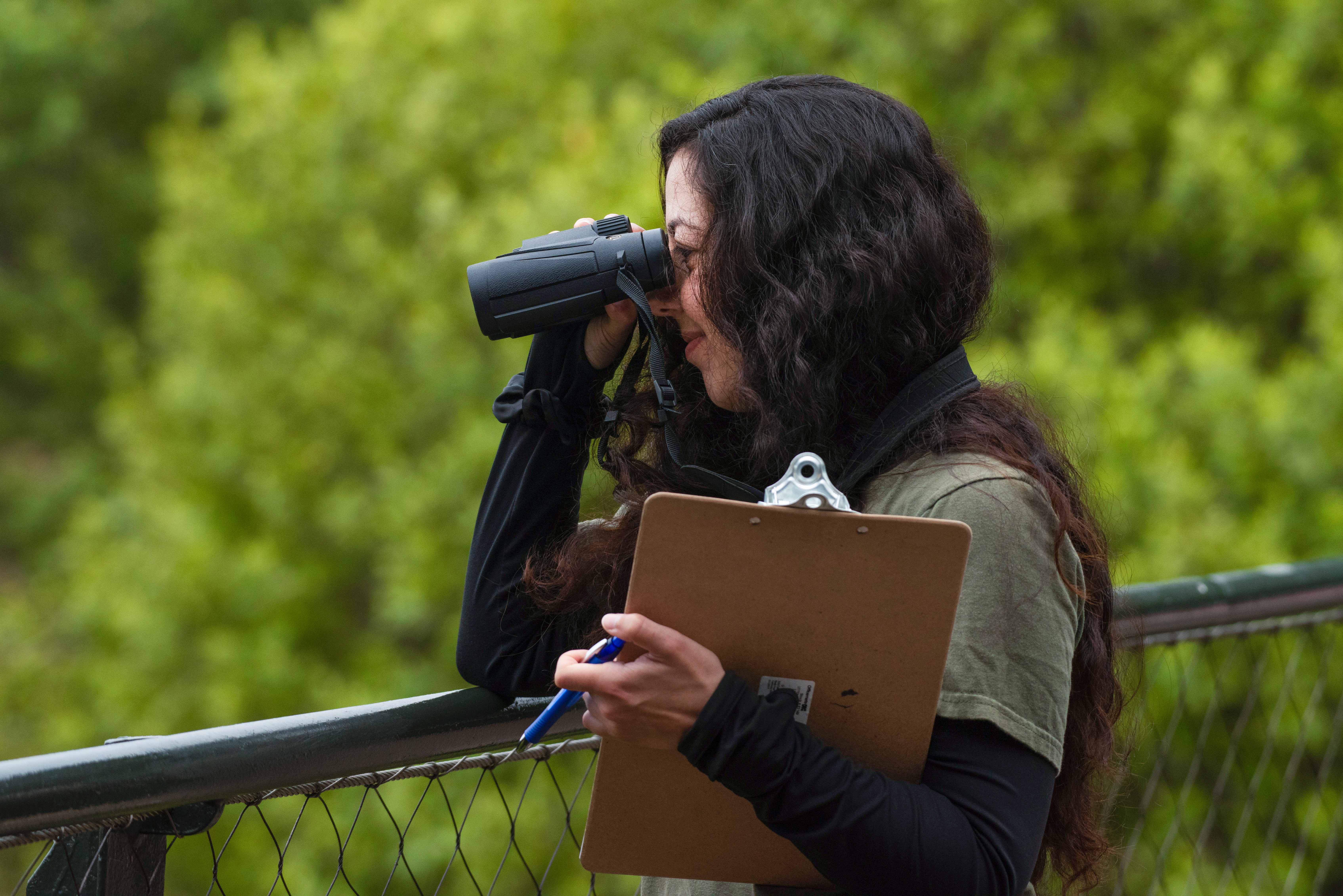
Field work
For five weeks Ghavamian and undergraduate students watched the pack from above while 12 cameras that ringed the space captured video at ground level.
The weeks were broken up between observing behavior and detailing interactions with the introduced objects. Additionally, the animal care staff completed personality surveys about the six wolves. Those surveys will be compared with behavioral observations to see if they match.
Seven blue and yellow PVC pipe rain sticks — marked so because of the colors wolves can discern — were placed in their habitat, as were papier-mâché balls. Those were to gauge personality — who was bold, who was not and if being with packmates led to more exploration of new things.
Later, seven 2-foot by 2-foot puzzle boxes containing meat were placed around the area. The boxes had different types of doors and ways to solve, or open them, typically requiring paws or teeth. The idea was to see “how does personality relate to how long it takes them to solve the puzzle box?” Ghavamian said.
At times the wolves checked out a rain stick, though cautiously. On one day, a popular table was avoided after rain sticks were placed on logs on either side of the table. Some wolves, who approached the objects and did brief visits, stood out as bolder than the others.
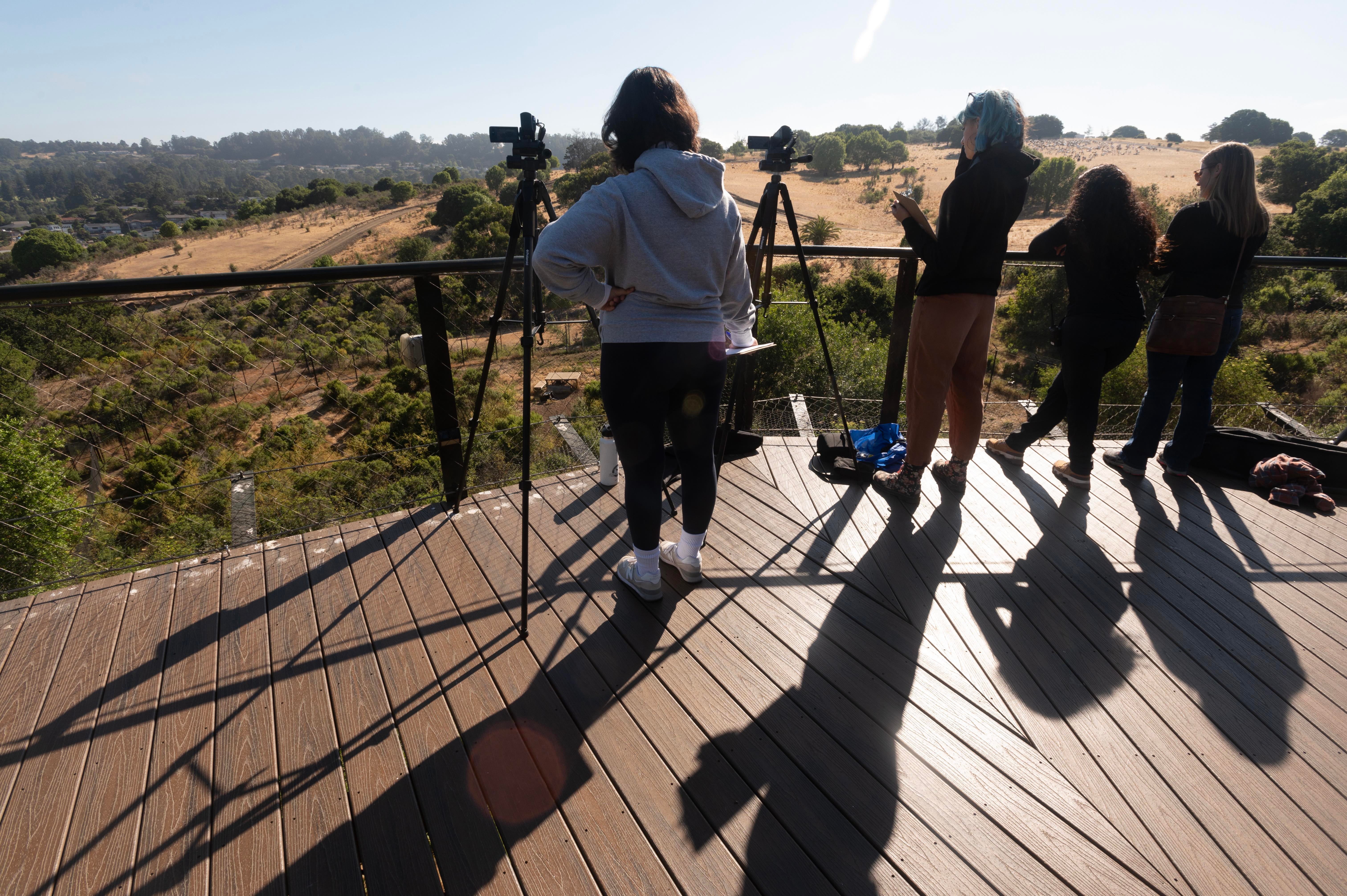
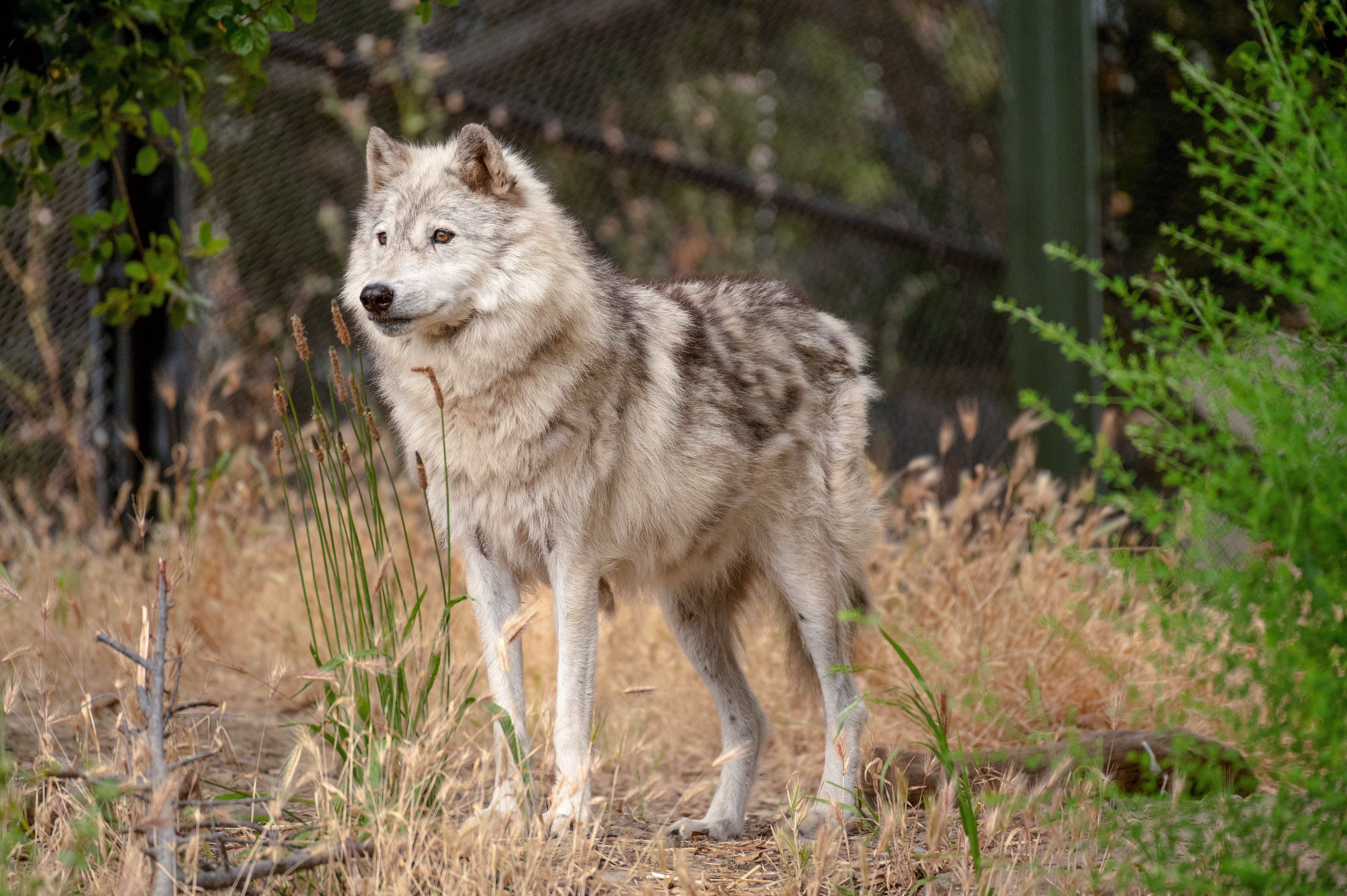
Ghavamian and the undergraduate students marked down each time a wolf got close to an object. A similar routine played out for the puzzle boxes. The doors were kept open to attract attention, and it wasn’t until the second to last day of the trials that Sequoia grabbed meat from six of the boxes, and one of the boys grabbed from the seventh. Siskiyou grabbed meat from a box on the final day.
The meat wasn’t worth the uncertainty of the risk at first, though that gradually changed for some in the pack.
“They’re more scared of us than we are of them,” Ghavamian said. “I think that says a lot for how we should respect them and what their role is in the ecosystem.”
Benefits of research
Oakland Zoo, which is governed by the Conservation Society of California, is internationally known, and research requests must be approved by zoological and medical staff. The access was key to Ghavamian’s research, but the facilities also benefit.
The zoo doesn’t have a large research budget or staffing to watch the wolves for hours on end. The personality and behavioral data could bring to light new discoveries, said Angela Gibson, the California Trail zoological manager.
“That gives us good information to have,” Gibson said. “We could be looking at things like changes in social dynamics.”
The California Wolf Center, which is home to 29 Mexican and four Northwestern gray wolves, is always seeking new research and data, and Ghavamian’s study could help fulfill many of the organization’s goals, said Ciera MacIsaac, the wolf care and reintroduction coordinator.
The center focuses on the breeding and reintroduction of Mexican gray wolves, protecting the animals in the wild and working with farmers and ranchers on deterrent measures. A main goal is returning wolves to the wild, and part of that is limiting human interaction.
“They do not see humans as part of their pack,” MacIsaac said.
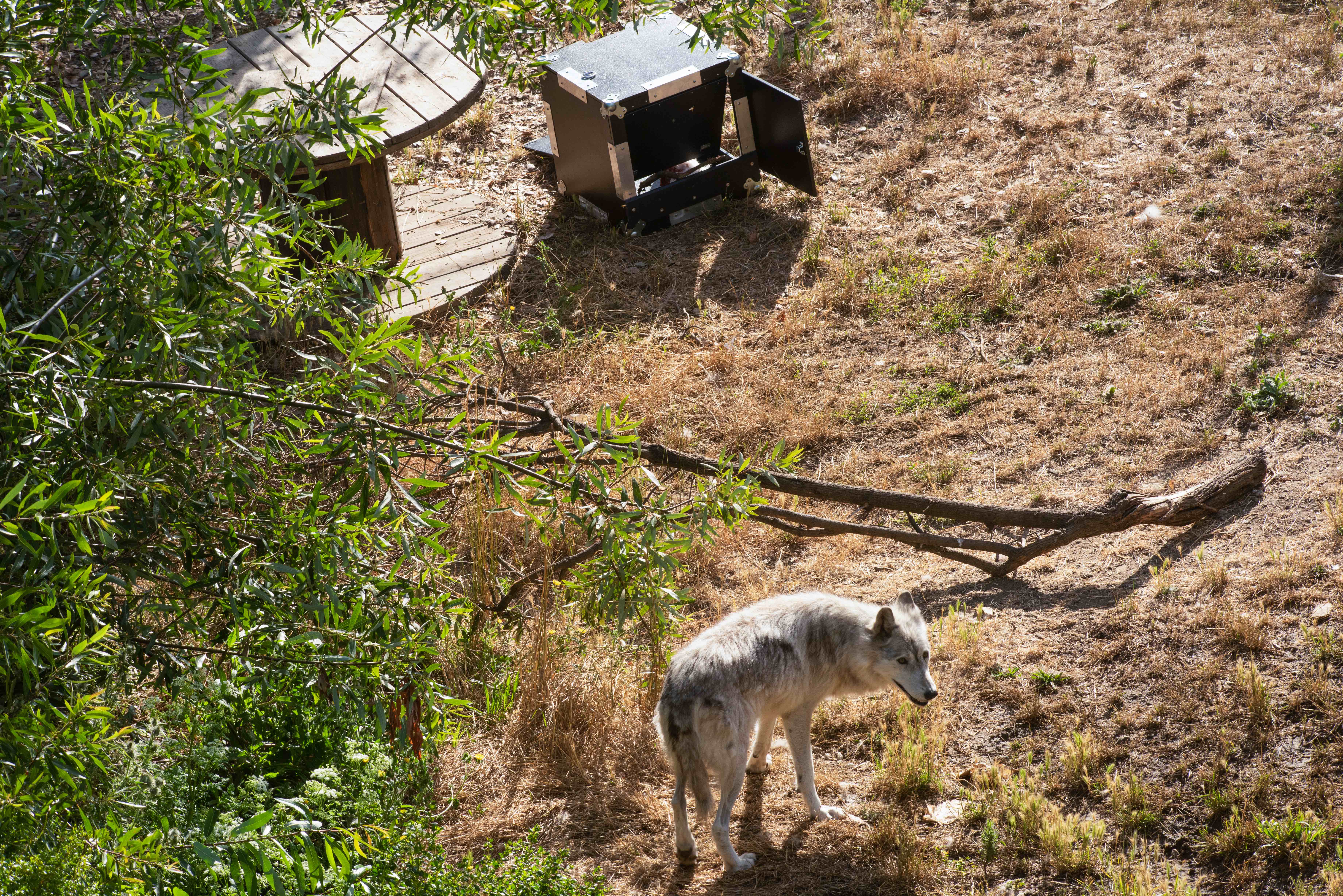
Ghavamian’s work will be with the Northwestern gray wolves. “It’s really awesome to be a part of new research and new ideas,” MacIsaac said. “She’s got some really interesting topics.”
The information, she said, could also be shared with other facilities and people working with wolves in the wild.
Manage for survival
Karin Vardaman is a field director and co-founder of Working Circle, an organization that works with ranchers in California, Colorado and Oregon on ways for wolves, livestock and people to coexist.
“The world is changing and there is a greater conservation emphasis,” Vardaman said. “It’s so important that folks start thinking about things differently.”
Wolves as individuals aren’t equipped as great hunters because they don’t have the teeth or claws to take down large game alone. The bold ones that take chances tend to get hurt so they hunt in packs and use landscape, prey vulnerability and other factors to their advantage. They prefer to attack from behind to weaken their prey before taking them down, she said.
Working Circle focuses on ways to manage cattle herds so that they respond to predators in a way that reduces vulnerability. It’s a proactive versus reactive strategy. Deterring wolves over thousands of acres is not practical or effective but the research with new objects could help in confined situations, such as calving pens.
“As wolves continually weigh risk against vulnerability, coming up with novel deterrents and switching things up is something we always recommend,” Vardaman said.
A new pack of five wolves was recently documented in the Sierra Nevada, 100 years after the species was believed extirpated, or extinct, in California. The group likely crossed over from Nevada.
The work out of UC Davis could create a more well-rounded picture about gray wolves.
“If we learn what the wolves are fearful of, no matter their personality type, we can use this knowledge to prevent human-wildlife conflict,” Horback said about the research.
Media Resources
Media Contacts:
- Yasmeen Ghavamian, Department of Animal Science, yghavamian@ucdavis.edu
- Kristina Horback, Department of Animal Science, 530-752-7018, kmhorback@ucdavis.edu
- Emily C. Dooley, College of Agricultural and Environmental Sciences, 530-650-6807, ecdooley@ucdavis.edu
- Isabella Linares, Oakland Zoo, ilinares@oaklandzoo.org
Media kit with photos and b-roll
